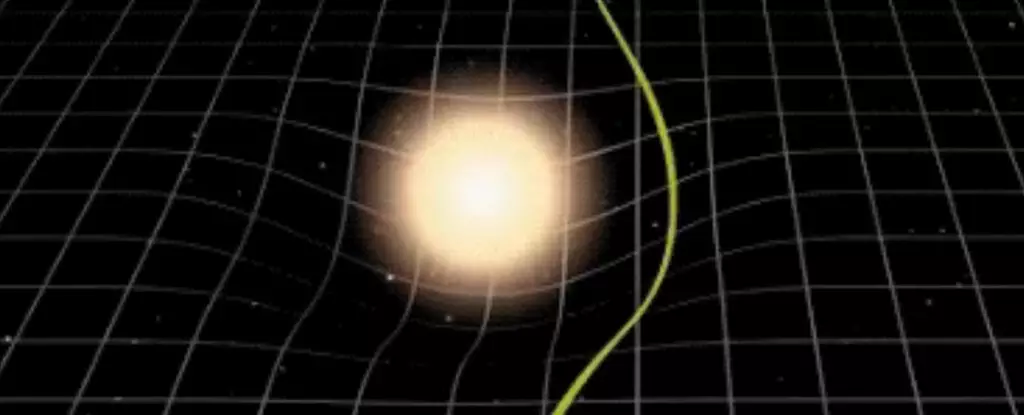The cosmos is a vast, intricate weave of celestial bodies, each in constant motion and interaction with one another. Among the many phenomena that shape our understanding of this universe is the gravitational bending of light (GBL), a concept that has perplexed scientists for generations. If an asteroid were hurtling toward Earth, the ability to detect and track it effectively is imperative—not only for planetary defense but also for scientific exploration. Recent advancements have shed new light on this subject, particularly through the pioneering work of physicist Oscar del Barco Novillo from the University of Murcia, Spain. His new equation promises not only higher accuracy in the calculation of light bending but also enhanced capabilities for monitoring celestial objects.
At its core, GBL refers to the phenomenon where light trajectories are distorted due to the presence of massive objects, such as stars or planets. This bending means that the actual positions of celestial bodies can be misinterpreted if GBL is not adequately accounted for. For astronomers and astrophysicists, understanding this distortion is essential for precisely charting the paths of smaller bodies, including asteroids that could pose a risk to Earth. Del Barco Novillo emphasizes the equation’s “high accurateness,” highlighting its potential to provide an early warning system in the event of a cataclysmic impact.
Del Barco Novillo’s approach is noteworthy in that it employs a geometric optics model to frame GBL calculations. He asserts that using a static massive object as a reference point—like our Sun—allows for this refined accuracy. Such precision not only aids in the location of asteroids and comets but could also enhance our understanding of distant stars, ultimately refining our cosmic maps.
Historical figures like Newton, Einstein, and their contemporaries laid the groundwork for GBL calculations, but Del Barco Novillo’s work pushes the boundaries further. The introduction of finite distances into the models marks a bold shift from older methodologies that often assumed infinite spreads of space. By adopting a material medium approach, akin to observing light passing through water, he mirrors the physical phenomena in everyday experiences to cosmic scenarios. This innovative perspective enriches the accuracy of his findings, bridging the gap between classical physics and modern astrophysics.
In confirming his new equation, Del Barco Novillo employed complex numerical simulations and comparative analyses with established formulas. Such rigorous validation enhances the credibility of his results and marks a significant improvement in the precision of celestial measurements.
The ramifications of Del Barco Novillo’s equation extend far beyond the realm of theoretical physics. From tracking errant asteroids to informing the ongoing Euclid mission, which aims to map galaxies and potentially uncover dark matter, this research sees immediate application. A more accurate understanding of GBL might also improve our targeting of Proxima Centauri, the closest star to our Solar System, aiding in the pursuit of exoplanetary research.
Furthermore, as astronomical instruments become more sophisticated, the need for accurate measurements becomes paramount. The implications of such precision can affect a variety of fields within astronomy and astrophysics, including celestial mechanics and stellar dynamics. As this new equation is woven into existing frameworks, the potential for discovery and better comprehension of our universe may expand exponentially.
In the quest to understand the universe, every minor advancement can lead to monumental shifts in knowledge. Oscar del Barco Novillo’s equation for calculating the gravitational bending of light represents not just a mathematical triumph but a beacon of hope for both astronomers and the general public. Should Earth ever face cosmic peril, this newfound accuracy in tracking celestial objects might afford humanity the foresight needed to alter fate. Ultimately, as we refine our understanding of the cosmos, we strengthen our resolve to explore it—and protect our place within it—the dance of light and gravity serving as our guiding rhythm.

